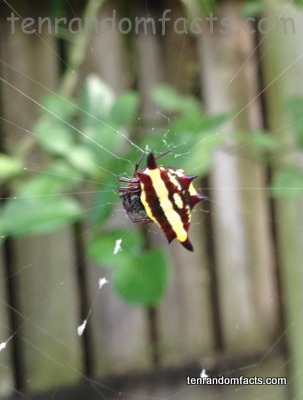Northern jewelled spiders are of a value not defined by money.
- Northern jewelled spiders are a species of small arachnid, native to Australia’s Queensland.
- The scientific name of the northern jewelled spider is Gasteracantha fornicata and it is from the family Araneidae, the family of orb weavers.
- In 1775, the northern jewelled spider was described and scientifically classified, being the first Australian spider to be named, by Johan Christian Fabricius, a zoologist from Denmark, from information collected from Cooktown, Australia, by Sir Joseph Banks and crew in 1770.
- Northern jewelled spiders have a spiny, striped abdomen, with six spikes visible from the top – two protruding on each side, and two at the back.
- The stripes of northern jewelled spiders are coloured maroon, brown or black, and white to yellow.
- Northern jewelled spiders have a diet that consists of various insects – effectively whatever is caught in the spider’s web.
- Female northern jewelled spiders can reach a width of 2.5 centimetres (1 inch) and a length of a single centimetre (0.4 inches), while males are significantly smaller and differ to the females in appearance.
- Northern jewelled spiders are most often found constructing webs in their rainforest habitats, and the completed webs can have a diameter as large as 2 metres.
- The bite of northern jewelled spiders is essentially harmless to humans, primarily due to the spider’s small size.
- The egg sacs of northern jewelled spiders are of a brilliant green colour, with an appearance of loosely woven spindly silk, and they are typically found on tree trunks and leaves, where they are camouflaged.





